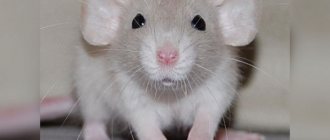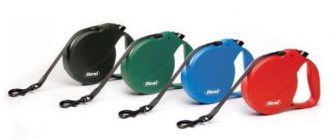Types of anesthesia for dogs
In veterinary medicine, two main types of anesthesia are used, which are divided into subtypes.
General anesthesia:
- intravenous;
- intramuscular;
- inhalation
Local anesthesia:
- terminal;
- regional;
- spinal;
- epidural;
- infiltration;
- intraosseous.
When choosing an anesthesia method, the specialist takes into account the gender, age, body weight, temperament and aggressiveness of the dog, as well as the nature and duration of the manipulation.
What painkillers can dogs use?
Analgesics that are effective for pain relief in humans can be dangerous and even fatal for dogs. Therefore, under no circumstances should you give your pet painkillers or other medications from your first aid kit.
There are specialized pain relievers for dogs. It is necessary that medications be prescribed to the dog by a veterinarian based on the characteristics of the particular animal - weight, general health and cause of pain.
Types of painkillers for dogs
There are many classifications of analgesic drugs, but among the main analgesics that have their own analgesic effect are non-steroidal anti-inflammatory drugs or drugs (NSAIDs or NSAIDs), steroid drugs, opioids and local anesthetics. The choice of analgesic for a dog is based on indications
Depending on the indications, the choice of analgesic for the dog is made:
- Non-steroidal anti-inflammatory drugs. In addition to their main action, NSAIDs have a strong analgesic effect. The Italian drug Trocoxil has proven itself very well in this category.
- Steroid drugs. They have a strong effect and are often used for severe conditions. Intended for short-term use.
- Narcotic drugs and opiate-based drugs. These are potent drugs used primarily during surgical interventions, or immediately after severe injury.
- Local anesthetics. Used for local impact on the source of pain.
What painkiller should I give my dog?
The veterinarian's prescription will greatly depend on the characteristics of the problem itself and the general condition of the animal. The most common situations when a dog needs pain relief are during surgery, the postoperative period, injuries, problems with the musculoskeletal system and, in particular, with joints.
Pain relief for dogs after surgery
This is a very important period that requires special care for the animal. After surgery, there is a high risk of developing inflammatory processes, so it is advisable to use an anesthetic for dogs with an anti-inflammatory effect. Non-steroidal anti-inflammatory drugs (NSAIDs) have these effects.
Painkillers used for dogs with joint disease
Local anesthetics and non-steroidal anti-inflammatory drugs are good options. You need to choose based on your specific situation. Local anesthesia is more harmless, as it does not affect other organs and tissues of the body.
Most often, problems with joints are caused by the presence of inflammation; in such cases, it is preferable not only to relieve the pain syndrome, but also to influence its cause, for this purpose non-steroidal anti-inflammatory drugs are prescribed.
General anesthesia
To perform surgical operations, it is necessary to completely immobilize the animal, remove sensitivity and relax the muscles, provided by drugs for general anesthesia. At this stage, the dog stops perceiving surrounding information and falls into deep sleep.
Intravenous anesthesia
The drugs for such anesthesia are injected using an intravenous catheter directly into a blood vessel, quickly spread throughout the body, enter the brain and provide a blockade of nerve endings. The popularity of this method lies in the ease of its implementation and the absence of the need to use expensive tools and equipment.
Negative factors include:
- the impossibility of quickly removing the animal from sleep;
- respiratory depression;
- hypotension;
- bradycardia.
However, a properly selected drug and its dosage will minimize the risk of side effects and complications.
Among the modern drugs used for general anesthesia are:
- domitor, which completely eliminates sensitivity and is one of the safest remedies;
- 10% hexenal solution, the duration of action is from 20 to 50 minutes;
- 3.5% sodium thiopental solution, effective for up to 45 minutes and does not cause stimulation of the nervous system;
- 20% sodium hydroxybutyrate solution used for caesarean section;
- profol, used in the treatment of animals with portosystemic shunt and other pathologies of the abdominal organs;
- Torbujesic, used for operations lasting 2-3 hours in dogs that do not have liver or heart pathologies.
For premedication, intramuscular injections of aminazine, vetranquil or rompun are used.
Intramuscular anesthesia
Most intravenous anesthesia can also be administered via intramuscular injection. The most commonly used anesthetics are ketamine and rompun.
Inhalation anesthesia
This type of anesthesia in dogs is used quite rarely, since it requires specialized equipment.
The animal inhales an anesthetic (isoflurane, chloroform or a chloroform-ether mixture) through a mask or endotracheal tube, quickly falls asleep and loses sensation. The advantages of inhalation anesthesia include the ability to control the process and the speed of drug withdrawal.
Factors influencing the degree of anesthetic risk
1) Type of animal. Some animals, for example, rodents, due to the peculiarities of their anatomy, already initially, regardless of what kind of operation is performed, have great anesthetic risks.
2) Breed. Different breeds of cats and dogs have a genetic predisposition to various diseases, the transmission of which can be inherited. For example, cardiac problems are initially characteristic of:
in dogs - shepherd dogs, Doberman Pinschers, Doberman Pinschers, poodles, dachshunds,
in cats - Persian, British, Bengal, Abyssinian and Maine Coon breeds, as well as their mestizos.
This does not mean that cardiac problems cannot occur in animals of other breeds. It’s just that heart problems in the listed breeds are more common and can be inherited. Cardiac problems in an animal increase anesthetic risks.
A breed feature that has an impact on the administration of anesthesia, such as flat-faced (brachycephaly) in Persian and Himalayan cats, Pekingese, pugs, griffins, Shih Tzus, bulldogs, boxers and other breeds that have a short muzzle and flattened nose, deserves special mention. Representatives of these breeds are characterized by upper respiratory tract syndrome (brachycephalic syndrome), which includes narrowing of the nostrils and nasal passages, changes in the soft palate (its lengthening and thickening) and deformation of the larynx.
When giving anesthesia to such animals, it must be borne in mind that they may have retraction of the epiglottis and obstruction of the airway. If appropriate measures are not taken in a timely manner, the animal may die from suffocation both directly on the operating table and after the operation is completed.
3) Age. Newborns and old individuals are exposed to the greatest anesthetic risks. Newborns have such small body sizes that it does not allow the anesthesiologist to carry out the required measures in full. They also still have an imperfect immune system and a high level of metabolism, which makes it much more difficult to calculate the dosage of medications. Old animals are characterized by age-related diseases, decreased immunity, general weakness and wear and tear of the body. All this affects the administration of anesthesia.
4) General condition of the body. The more severe the condition in which the animal is before the operation, the more likely are possible complications during the operation and immediately after it. Anesthetic risks are affected by dehydration, exhaustion, obesity, hypothermia, massive blood loss, extensive wounds and burns, intoxication of the body, the presence of an oncological process, hypotension and hypoxia.
5) Presence of concomitant diseases (heart, liver, kidneys, etc.). All other things being equal, animals with a history of any disease are subject to greater anesthetic risks compared to healthy animals.
6) The operation itself. The higher the surgical risks, the higher the anesthetic risks. The greater the volume of surgical intervention, the longer the operation lasts, the higher the surgical and anesthetic risks, which are closely related to each other.
Local anesthesia for dogs
Temporary loss of pain sensitivity in certain areas of the body is called local anesthesia.
Important! In large individuals, the feasibility of its use is small, since the animal is not immobilized.
Before using local anesthetics, the veterinarian is required to conduct an intradermal test to determine the dog’s particular sensitivity to them. This allows you to avoid the development of allergies and complications during surgery.
Terminal
This anesthesia is caused by applying an anesthetic in the form of an aerosol, ointment or solution to the damaged area. It is used for suturing the edges of the wound, opening abscesses and hematomas, and removing necrotic tissue in case of thermal burns of the skin.
Most often, chlorethyl, lidocaine or trimecaine are used to anesthetize the skin.
Regional
With this anesthesia, a nerve plexus or trunk is blocked, which provides innervation to a certain topographic area.
It is used for:
- rib fractures;
- pleuropneumonia;
- intercostal neuralgia;
- radiculitis;
- short surgical operations on the rectum and tail;
- dental manipulations.
To do this, solutions of lidocaine, novocaine or trimecaine are administered.
Spinal
To carry it out, a needle equipped with a mandrel is used, through which a solution of sovcaine, novocaine or dicaine is injected into the subarachnoid cavity of the dog’s spinal column. This makes it possible to perform operations on the lower extremities, pelvic organs and abdominal cavity.
This type of anesthesia is rarely used, since accidental injury to the spinal cord can lead to respiratory arrest, severe pain, paralysis and other complications.
Epidural
Anesthesia is achieved by injecting an anesthetic into the epidural space of the spinal column, resulting in a blockade of the spinal cord nerve roots. It is used to make it possible to perform operations on the abdominal and pelvic organs, when there is a high risk of using general anesthesia.
The use of epidural anesthesia is advisable during delivery, when the dog must be conscious.
Infiltration anesthesia (for older dogs)
The infiltration anesthesia method is based on layer-by-layer injection of anesthetic. First, the skin is anesthetized, an incision is made, and then infiltration of the tissues surrounding the affected organ with novocaine solution continues.
This anesthesia is used in old dogs or individuals weakened by a long-term illness, as it wears off quickly and does not put additional stress on the heart.
Intraosseous
With this type of anesthesia, a solution of novocaine is injected into the spongy bone, having previously blocked the flow of blood to the damaged area. To do this, the animal's limb is raised and a tourniquet is applied. The manipulation is carried out after the disappearance of the pulse in the peripheral vessels.
Complete loss of sensitivity occurs after a quarter of an hour and lasts until the tourniquet is removed, allowing you to completely treat the fracture area, remove the resulting hematoma, or put together fragments of injured bones.
Anesthesia. What is it and why is it needed
The use of anesthesia in veterinary medicine for carrying out the simplest procedures, be it x-rays, or removing baby teeth, or grooming cats, etc., is due to the specifics of working with animal patients.
It is unrealistic, for example, to expect a dog to sit obediently with its mouth open while a doctor performs oral hygiene procedures.
Any actions with animals are perceived by them as a threat to life, so they can put up desperate resistance, injuring themselves, the owner, and the clinic staff. To prevent this from happening, anesthesia is used.
Anesthesia is a reversible state of central nervous system inhibition artificially induced with the help of medications, in which sleep occurs, loss of consciousness and memory, relaxation of skeletal muscles, reduction or shutdown of some reflexes, and loss of pain sensitivity. Vital functions of the body, such as respiratory and cardiovascular, are preserved. As the concentration of drugs used to induce anesthesia in the blood decreases, the animal’s consciousness becomes clearer and is completely restored. The functioning of the entire body is also completely restored.
Properly administered anesthesia will not cause any harm to a young, healthy body. If the animal is elderly, if it has concomitant chronic diseases, then anesthesia can contribute to the exacerbation of these diseases and even lead to the death of the animal if there are cardiac problems. Therefore, before carrying out any procedure, the condition of the animal as a whole is assessed.
Preparing your dog for anesthesia
To select the correct type of anesthesia, medication for its administration and dosage, the doctor must conduct a number of studies, including:
- inspection;
- determination of body weight;
- determination of general blood and urine parameters;
- ECG;
- fluoroscopy (if necessary);
- Ultrasound of the heart and abdominal organs.
In turn, the owner must prepare the pet for the upcoming operation, ensuring the hygiene of the coat. The dog should stop feeding 12 hours before the clinic visit. This will help avoid involuntary vomiting and defecation, which occurs when the sphincters relax under the influence of anesthetics.
Important! If the animal has a hard time during transportation or shows aggression towards other people and animals, then you should consult with a specialist about administering a sedative before leaving home.
Before administering premedication, the specialist once again conducts an examination, measures pulse and blood pressure. The owner can be close to his pet at the time of administration of the sedative and while falling asleep. His further presence in the operating room is prohibited.
Anesthesia in older animals
In this article I would like to consider a fairly common and pressing issue about anesthesia
aged animals, as well as dispel some myths associated with this and, most importantly, answer the question for owners why they should not be afraid of surgical interventions in “aged” animals. Let's start with the simplest thing: how to determine what age category our patient belongs to?
It is generally accepted that an animal is elderly when it has lived 75-80% of its expected lifespan. This definition is much more competent than establishing strict age limits, since the life expectancy of different species and breeds of animals can differ significantly, for example, dwarf dog breeds live longer than giant ones. German dog
can be considered senior at 6-7 years, and a Jack Russell Terrier or Miniature Poodle after 10 years.
The age of the animal is not a direct contraindication to anesthesia, but this category of patients requires more in-depth preparation for the operation, including the necessary preoperative diagnostics.
Also, these animals require more careful attention during surgery.
Let's talk about preoperative preparation.
Usually, with age, our patients develop chronic diseases and structural “age-related” changes in organs, the same applies to metabolism.
In order to understand which anesthetic scheme to choose for a particular patient, we need to have sufficient information about the processes occurring in his body, so do not be surprised that the veterinary anesthesiologist
will prescribe the necessary studies before administering anesthesia to your animal.
We always start with the simplest thing, this is collecting anamnesis, that is, everything that happened to your pet during its life (usually these are simple questions regarding vaccination, living conditions, feeding, collecting information about past diseases or the presence of concomitant complaints). You should not hide any information from your doctor; remember, even the smallest detail can cost your pet his life.
The tests that we recommend for all elderly patients are: cardiac echocardiography
, clinical and biochemical blood test, sometimes
chest x-ray Why is this being done?
Over the course of life, animals, like humans, experience physiological “wear and tear” of the body. Often our patients look absolutely healthy, without any complaints about their general condition. But after carrying out related examinations, some pathologies are often revealed.
Screening echocardiography helps us understand what is happening with the cardiovascular system, whether there are any cardiomyopathies, congestion, how well the organ is functioning, this greatly facilitates the understanding of how to administer anesthesia to an animal with the least risk. arrhythmias may be detected
, heart defects. Typically, such patients are prescribed treatment and surgery, except in cases where the patient is in critical condition, it is postponed taking into account the use of compensatory drugs (usually for 5-7 days).
Blood tests provide a complete picture of how the animal’s internal organs function. The most important profiles for an anesthesiologist are renal and hepatic (since these organs are involved in the metabolism of anesthesia drugs), if the doctor sees an increase in any of these indicators, you may be refused anesthesia until they stabilize and return to normal levels.
Animals entering for surgical treatment of various tumor processes undergo chest x-rays to exclude the process of metastasis. X-rays may also be needed for patients with respiratory diseases.
It is important to understand that diagnosis is extremely important and its role is difficult to exaggerate.
Only after all diagnostic measures have been carried out and we have a complete understanding of our patient, the degree of anesthetic risk is determined and an individual anesthetic treatment is selected.
Before anesthesia is administered, the patient must undergo premedication (10-15 minutes before induction of anesthesia) - this is a set of drugs that are aimed at reducing the negative effects of anesthesia drugs.
In our clinic, all drugs necessary to put an animal under anesthesia are administered through an intravenous catheter, which is installed on the front or hind limb of the animal. If the patient is in critical condition, the catheter can be installed in the jugular vein (in the animal's neck).
During surgery in the operating room, animals are monitored for all basic vital signs (pulse, heart rate, ECG, respiratory rate, saturation, temperature, blood saturation with oxygen and carbon dioxide)
If a veterinary anesthesiologist sees deviations from the norm in a patient, all measures are immediately taken to relieve any deviations with medication.
If resuscitation measures are necessary, they are provided in full, including artificial ventilation.
and various types of heart massage
After surgery, the patient wakes up in an individual box under the supervision of doctors and nursing staff; if the animal is in serious condition, it receives all the necessary monitoring until its recovery. All patients receive infusion therapy both during and before surgery, aimed at better recovery from anesthesia, as well as correction of concomitant diseases.
At the discretion of the veterinarian, especially after complex and lengthy operations, your animal may be left in the hospital for further management and monitoring of the condition.
Rehabilitation after anesthesia
Some doctors insist that the animal spend the first postoperative hours in the clinic under the supervision of specialists. In some cases, such timely assistance saves the dog’s life, so you should not refuse such a service.
If the entire process of pet rehabilitation takes place at home, then you should ask your veterinarian in detail about the possible consequences of anesthesia.
After waking up, the animal may experience:
- vomit;
- unsteadiness of gait;
- lack of orientation;
- thirst.
Important! During this period, it is worth providing the dog with complete peace by turning off all sources of noise and lighting. If your pet shows anxiety, it should be calmed with gentle stroking.
In the case of aggression, which may be a side effect of anesthesia, the dog should be left alone, removing from the room objects that could injure, burn, etc. A container of clean water and a litter tray should be placed within the animal’s reach.
But the first meal should be no earlier than 10-12 hours after surgery. Refusal to feed on the first day is considered normal, provided that the dog drinks water and responds adequately to external factors.
How long does it take for a dog to recover from anesthesia after surgery?
There is no need to be alarmed if the dog sleeps for a long time after anesthesia. After a major operation with complications, she should be left in the hospital under observation.
Usually the animal is released home after full awakening. If difficulties arise, your veterinarian will be able to provide assistance.
How do dogs normally recover from anesthesia?
It is impossible to unambiguously determine how long a dog recovers from anesthesia after surgery. After all, each procedure is individual. But usually, after intravenous anesthesia, the pet’s recovery lasts from 6 to 20 hours.
The first question that interests the owner is whether the dog can drink water after anesthesia. The animal can be given a drink 5-6 hours after complete recovery from anesthesia.
Many people are also interested in how long after anesthesia you can feed your dog. The first food should enter the body no earlier than 10-11 hours later.
Important! When the dog has not yet recovered from anesthesia, it is allowed to moisten its tongue with a small amount of water 1-2 times an hour.
Possible complications in dogs after anesthesia
On the first day, you should periodically measure your temperature and pulse to notice the first signs of complications.
The following symptoms should be the reason to contact a specialist:
- a sharp rise or fall in temperature;
- wheezing;
- pallor of the mucous membranes;
- severely rapid or weakened heartbeat;
- bloody diarrhea;
- bleeding;
- convulsions or paralysis.
After the anesthesia wears off, the dog may experience severe pain, which is indicated by rapid breathing, whining, restlessness and other signs. It is worth consulting with your doctor in advance about the possibility of using painkillers.
Monitoring will help protect your dog during anesthesia
Proper monitoring is an integral part of anesthesia. Monitoring includes close observation of breathing, heart rate, temperature, ECG and oxygen levels. Ideally this will also include monitoring your blood pressure and CO2 levels.
Small changes can be seen immediately. They help the doctor or nurse adjust the anesthesia to keep your dog within a safe range. Some dogs may require additional monitoring, such as diabetics, who need their blood sugar levels monitored throughout the procedure.










